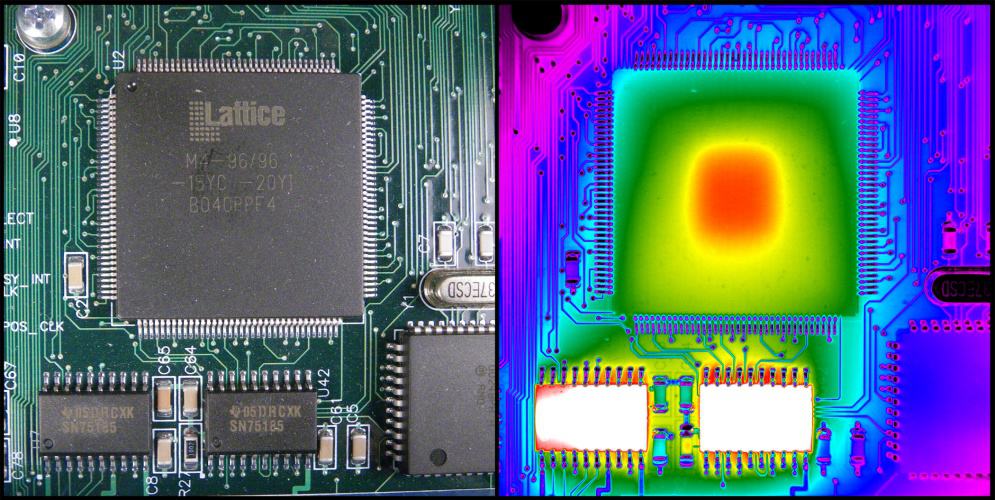
For measuring temperature is it best to use a spot pyrometer, a thermal imaging camera or a combination of the two? Well essentially it depends on the application, whether the measurement needs to be put into context and also the scope of temperature measurement across other tasks.
All the devices work according to the same principle; they are non-contact devices that detect infrared radiation and translate it into a temperature reading. Indeed a spot pyrometer can be seen as a thermal camera with just one pixel and it can be very useful for a wide variety of tasks but, it is simply a tool that measures temperature in one spot, nothing else. This may be sufficient for some applications it does not allow the full potential of thermal measurement to be incorporated into the predictive maintenance routine.
While a spot pyrometer gives you a single number, a thermal imaging camera generates an image from multiple pixels each of which provides a temperature reading. In effect the camera combines thousands of spot pyrometers in one device. So a camera with an image resolution of 160 x 120 pixels, such as the FLIR E40, is therefore able to provide 19,200 temperature readings at once.
These many thousands of measurement points are then translated into a radiometric thermal image providing a complete overview of the target area. This allows the operator to see the thermal profile of the problem and its heat distribution. It puts the hot spot into context, greatly assisting diagnosis. Some cameras also provide simultaneous visual imaging and cleverly combine both thermal and visual images to give greater detail.
A thermal camera also saves inspection time. Scanning large areas with many components using a spot pyrometer is a very time consuming task whereas, with a camera, a single image is often all that is needed. Also, thanks to their advanced optics, thermal cameras can resolve temperatures from further away and with a greater degree of accuracy.
By comparison, for a pyrometer to maintain its accuracy, very close attention must be paid to its spot size in relation to the size of the target; the smaller the target, the closer the camera needs to be to that target to ensure the spot size covers it entirely. If the target is smaller than the spot size, the detector will take in radiation from the object’s surroundings, potentially compromising accuracy.
Recent developments have taken the scope of temperature measurement even further. Maintenance engineers no longer have to choose between a spot pyrometer and a thermal imaging camera, they now also have the option of an imaging thermometer. The development of a micro thermal imaging core has allowed the benefits of spot measurement and radiometric imaging to be combined so engineers can have both technologies instantly available for fast and effective troubleshooting.
Indeed, the introduction of the micro-core is paving the way for a range of combined technologies – watch this space.










National Gas receives funding to develop Gravitricity underground hydrogen storage system
One single rock salt mine - Winsford - has 23 <i>MILLION </i>cubic metres of void and even allowing for 10% of that void set aside for hazardous waste...